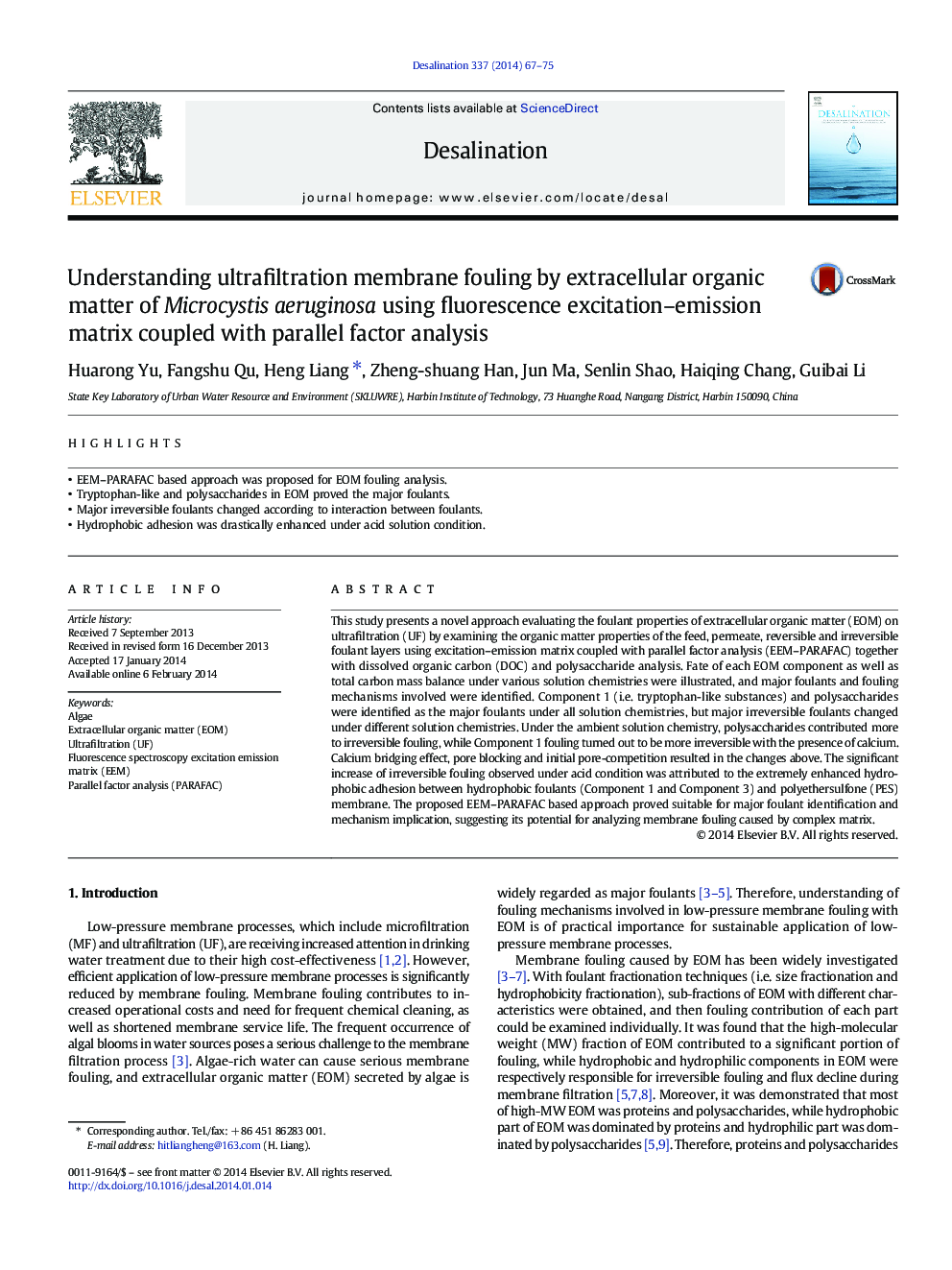| کد مقاله | کد نشریه | سال انتشار | مقاله انگلیسی | نسخه تمام متن |
|---|---|---|---|---|
| 623611 | 1455358 | 2014 | 9 صفحه PDF | دانلود رایگان |

• EEM–PARAFAC based approach was proposed for EOM fouling analysis.
• Tryptophan-like and polysaccharides in EOM proved the major foulants.
• Major irreversible foulants changed according to interaction between foulants.
• Hydrophobic adhesion was drastically enhanced under acid solution condition.
This study presents a novel approach evaluating the foulant properties of extracellular organic matter (EOM) on ultrafiltration (UF) by examining the organic matter properties of the feed, permeate, reversible and irreversible foulant layers using excitation–emission matrix coupled with parallel factor analysis (EEM–PARAFAC) together with dissolved organic carbon (DOC) and polysaccharide analysis. Fate of each EOM component as well as total carbon mass balance under various solution chemistries were illustrated, and major foulants and fouling mechanisms involved were identified. Component 1 (i.e. tryptophan-like substances) and polysaccharides were identified as the major foulants under all solution chemistries, but major irreversible foulants changed under different solution chemistries. Under the ambient solution chemistry, polysaccharides contributed more to irreversible fouling, while Component 1 fouling turned out to be more irreversible with the presence of calcium. Calcium bridging effect, pore blocking and initial pore-competition resulted in the changes above. The significant increase of irreversible fouling observed under acid condition was attributed to the extremely enhanced hydrophobic adhesion between hydrophobic foulants (Component 1 and Component 3) and polyethersulfone (PES) membrane. The proposed EEM–PARAFAC based approach proved suitable for major foulant identification and mechanism implication, suggesting its potential for analyzing membrane fouling caused by complex matrix.
Journal: Desalination - Volume 337, 17 March 2014, Pages 67–75